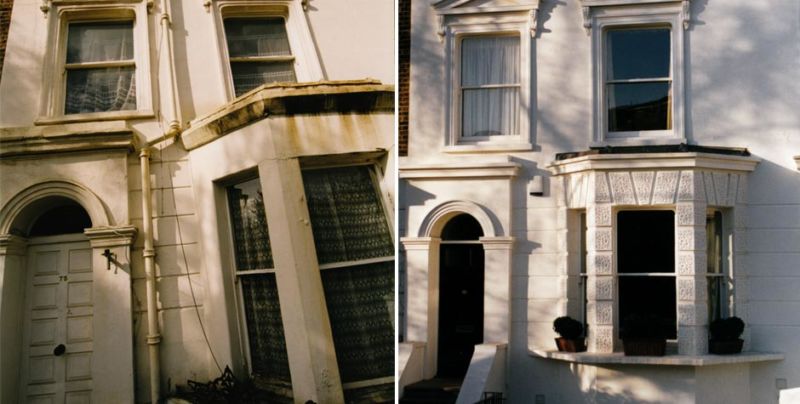Ancient Fibrous Plaster
If you have ever been to the British Museum, you will have seen the famous Egyptian galleries full of mummies (and children, and tourists). If you have ever been to a West End theatre, you’ll have seen the elaborate, decorative ceilings. You may not realise (and you may not care, in which case, stop reading) but these two London attractions have at least one thing in common other than the sheer number of tourists they attract. Fibrous plaster. If that still hasn’t put you off reading, then here’s another fun fact. There are suggestions that this material we now use for decoration was once used by the Ancient Egyptians in an attempt to combat crime.
The Ancient Egyptians used a material called cartonnage to make funerary objects as part of their burial processes. Cartonnage consists of layers of a fibrous material and plaster, thus making it similar to the fibrous plaster we use today. The most commonly used material then was linen as opposed to hessian, but in the later periods of Ancient Egypt old scraps of papyrus were also used. According to the British Museum, the earliest cartonnage objects are funerary masks, some of which date from 2,100 BC. Around 2,050 BC, the period of the Middle Kingdom of Ancient Egypt, cartonnage coffins also started to be used. At first only used occasionally, by the 22nd Dynasty (beginning c. 943 BC), cartonnage was widely used for the innermost coffin at all levels of society.
To construct a cartonnage case a disposable core in the shape of the mummified body was first made, using mud and straw. Layers of linen soaked in plaster were then applied to the core and built up, sometimes up to 20 layers thick. Before this dried completely and while it was still malleable, an opening was cut in the back and the core was removed. The mummified body was then carefully fitted in and the opening was laced together, sealing the body inside. A fine layer of white plaster was then applied to the outside of the case, and once this had hardened it provided a surface to paint on. Cases were covered with protective symbols and images of gods and goddesses, but most importantly the deceased’s name; a vital part of their identity which the Ancient Egyptians believed they needed to take with them to the afterlife in order to be happy and successful there.
Cartonnage is believed to have been used because it was malleable enough to create a case that could fit closely round the mummified body. It was also quick and cheap to produce and so accessible to all levels of society, plus the plaster provided a perfect surface to paint on. Significantly, it also prevented the mummified body from being removed from the case. Once dried and sealed, the remains could not be removed without damaging the case, thus preventing the coffin from being stolen and recycled.
Why would this be a problem in a society where burial rites were so important and revered? Well, they might not have been so by everybody. Grave robbers had always been a problem in Ancient Egypt – nearly all of the tombs discovered by archaeologists display evidence of being robbed during antiquity, some even around the time of the burial. Interestingly, the increase in the use of cartonnage follows the period of the New Kingdom (c 1570 – 1069 BC) when grave robberies became increasingly common, thus suggesting there could be a link between the two. The problem had grown so acute in this period that the Pharaoh Amenhotep (1541 – 1520 BC) commissioned the specially designated and isolated burial site in the desert outside Thebes which we know today as the Valley of the Kings. An isolated village was built nearby where the workers who built the tombs would live and protect them, the idea being that their dependence on the state for their daily necessities would keep them loyal and the isolation of the graves would deter potential thieves. However, these loyal workers ended up becoming some of the most prolific grave robbers there were, and the problem steadily worsened. By the time of Ramesses III (c 1156 BC), the Egyptian state was slowly breaking down and the supplies for these workers were arriving late, if at all, meaning more and more of them turned to grave robberies. Court records show that grave robbery cases were dealt with on an almost daily basis. The confession of one thief from around 1110 BC also shows how release could be secured by bribing a corrupt official with some of the loot from the robbery, demonstrating that all levels of society were involved.
Although tomb robberies usually targeted the precious objects buried with a richer person, these could sometimes be contained within the coffin leading to the body being disturbed. On examining some mummies closely historians have also discovered evidence of ‘coffin recycling’; some coffins were either made up of components of other coffins which had been broken down, or were completely ‘re-cycled’ with the name of the previous owner removed and a new owner replaced inside. In contrast to wooden or stone coffins, cartonnage effectively sealed the body inside a hard case which would be too damaged by the removal of the body to be ‘re-cycled’. It certainly would not have completely solved the problem of grave robberies, and of course this was not the only reason cartonnage was used. However, by reducing coffin recycling it increased the chances of the mummified body progressing to the afterlife undisturbed and with their protective symbols and name intact and the time at which it became wide-spread suggest this was a factor in its use. Something to think about next time you’re admiring those intricate theatre ceilings.










